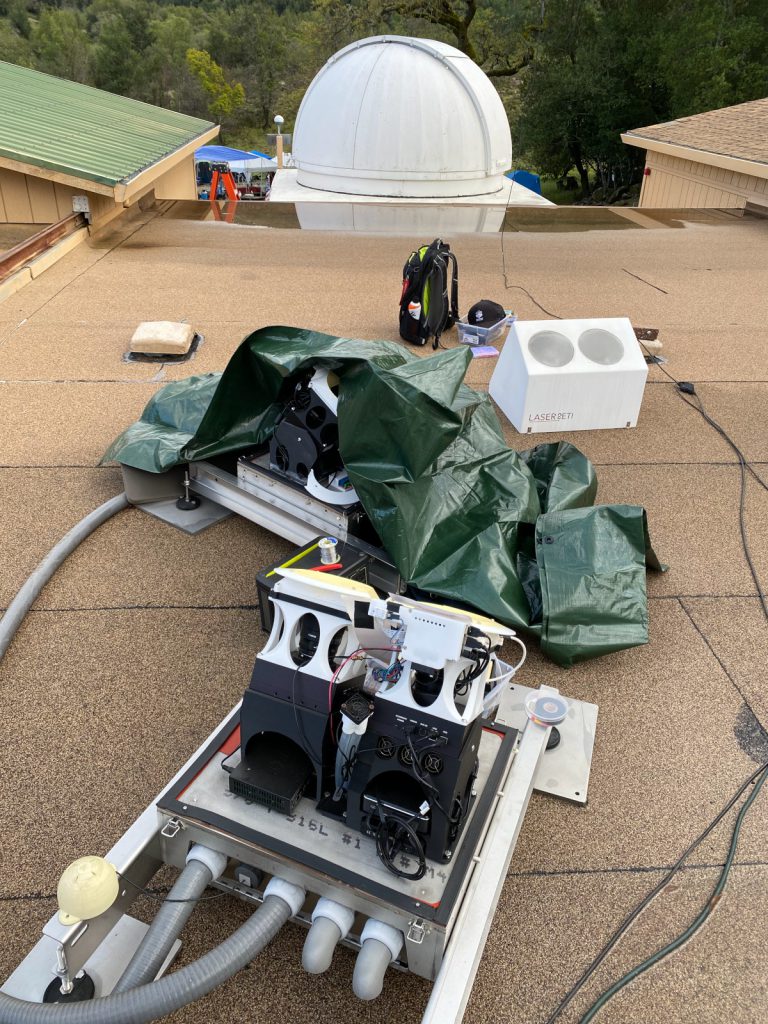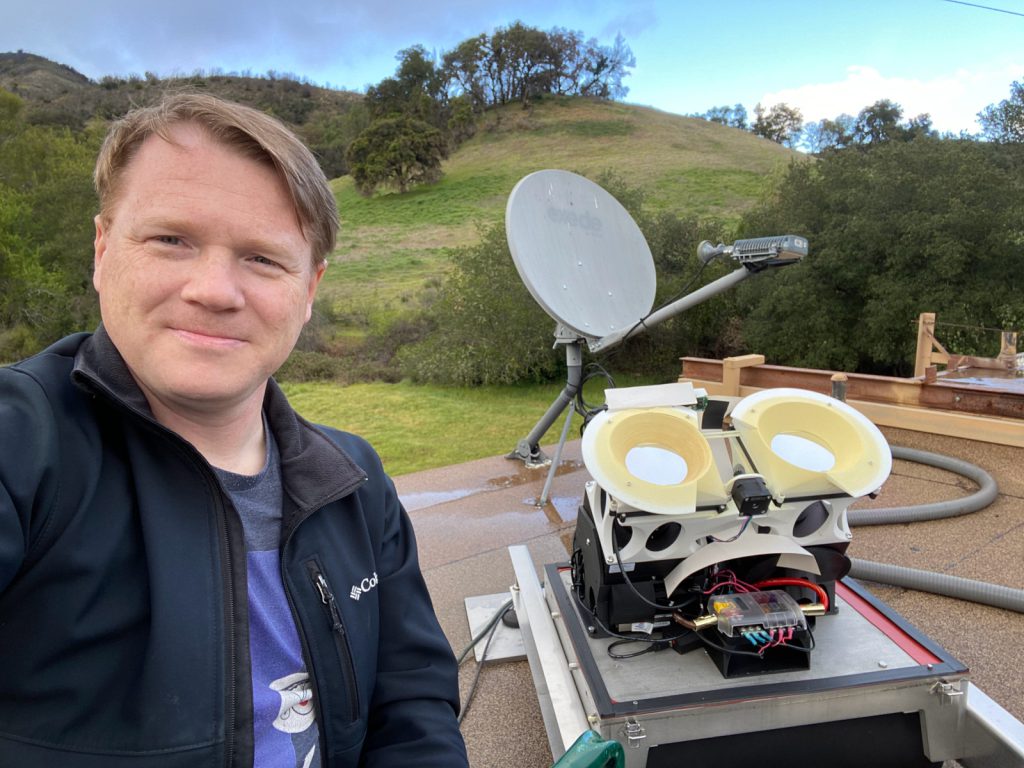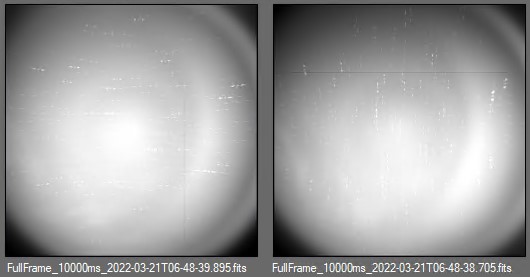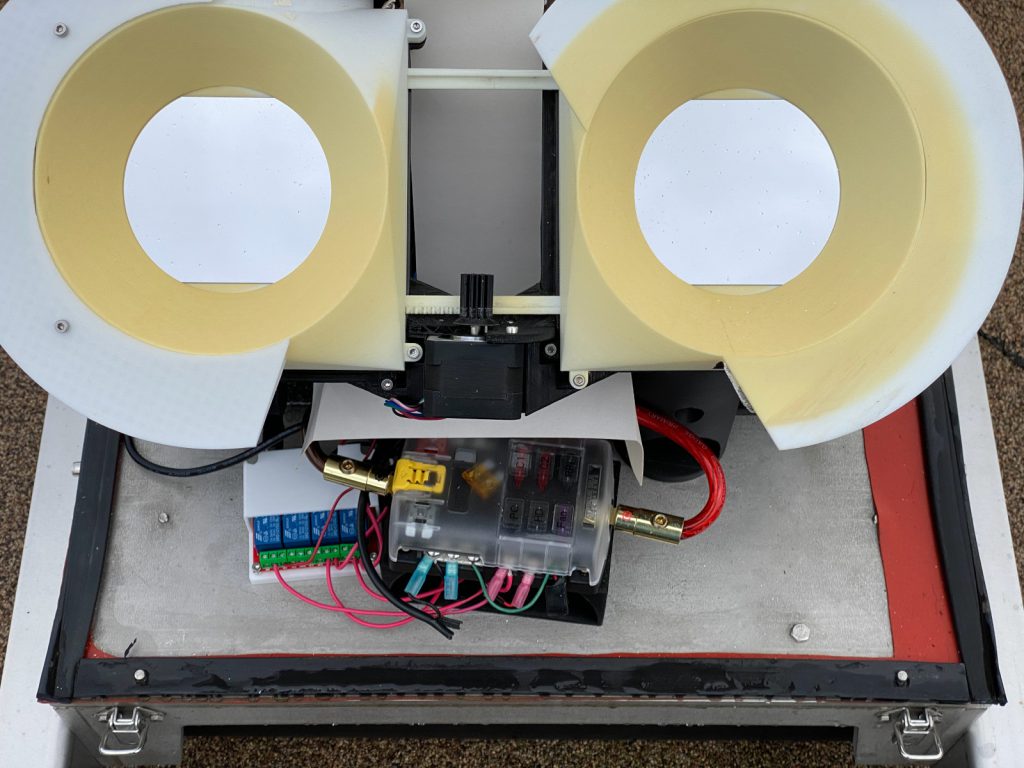RFO Site Visit
Yesterday, Dan and I spent all day at Ferguson Observatory (RFO). We had a spot of rain to work around, but a number of things to get done and the trip was largely successful.

We dropped off the Drobo “SneakerNet” disk array that we use to exfiltrate data from RFO because the satellite link is too slow and expensive for that. LaserSETI analyzes data in real-time, but since we’re still in the early phases of our dual observation strategy, we’ve kept pretty much every pixel of observed photons thus far. This time was special because we had a failed disk (it’s a 5-disk array), but even after replacing that disk with two different spares, we concluded that one of the ports in the Drobo itself has failed.
We soldered the vert-cam’s power lead after having previously bypassed the relay in precariously fragile but 100% reliable manner *cough*cough*zip*tie*cough*.

If you’ve been watching the live pictures from the instruments recently, you would’ve seen evidence of RFO1’s sunshade not opening fully. I think it might be related to the humidity but, in any case, we carefully applied our special Teflon lubricant meant for polycarbonate, allowing it to out-gas as much as possible before reinstalling it, to prevent any potential chemical reactions on the optical surfaces. It’s now performing flawlessly! I wish I’d remembered to save a before-and-after movie since it records a movie of every open or close, but it currently overwrites the previous one. It’s on our To Do list to save a sample, for the curious as well as to document the daily operation of this critical component.

Since it was wet, it was a good chance to observe the seals, louvers, and other ingress protection mechanisms in action. I’m pleased to report that not a drop of water could be found inside the instrument!

On RFO2, the problem had been with its external hard drive, mostly working whenever tested but failing fairly quickly under the heavy load of science observing. Having replaced the drive, enclosure, and cord, we replaced the PC itself. Long story short, Dan did a huge amount of work, figuring out that adding an internal drive didn’t work while on 12 volt DC power (but did work on 13 volt DC), that modern browsers refuse to speak the old version of SSL that our router uses, and that Windows Firewall is unreasonably insistent in blocking remote access. All of these issues took an inordinate amount of time to diagnose, particularly because they all happened simultaneously and hence had to peel the layers of failure and obstacle like an evil onion. Now that we’re pretty sure we have a complete diagnosis, we expect to have RFO2 back online within a week or so, since it will require a another trip–the 5th actually–on this issue.

Jumping to Hawaii for a minute, after a surprising but successful visit last month to Haleakala, IFA1 has performed well and taken a lot of great data. Unfortunately, IFA2 has started exhibiting similar external hard drive issues to RFO2, so we’re making arrangements to try swapping out the disk and enclosure, as well as create some software backup procedures to allow some observing when this symptom appears, based on our learnings from trying to do so with RFO2.
For those of you who followed the Mars Exploration Rovers, I think you’ll understand why I feel like both RFO1 and IFA1 are like Opportunity, and RFO2 and IFA2 are like Spirit. After operating on Mars for more than a year, the NASA team noted that everything came easily to Opportunity, while Spirit had difficulty after difficulty. It’s especially eerie that Opportunity landed first, and the LaserSETI analogs are RFO1 and IFA1.
See you again soon!